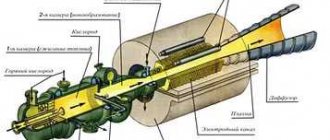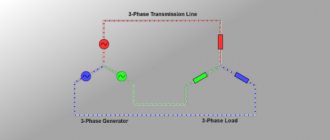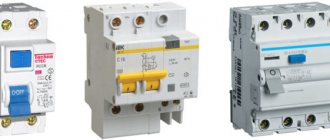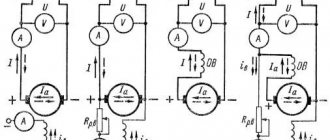Buying your own generator as an alternative source of energy for a home or construction site is a solution that is becoming increasingly relevant. An autonomous generator is not only convenient, but often indispensable in the absence of other sources of electricity. Gasoline generators are best suited for a home or cottage - they have a fairly long service life, are easier to start than diesel and gas ones in cold weather, and the simplicity of the device reduces their price and makes repair and maintenance easier. A gas generator is an ideal option for those who need mobility, ease of transportation and relatively low power. Today we will look at what the gasoline generator market offers us at the end of 2020 - early 2022, and we will figure out which popular gasoline generators are the best.
When is a home generator useful?
Electric generators are most often used in emergency situations. When the power supply to the site is interrupted, it is enough to remove this unit from the garage and start it to temporarily restore the power supply.
Many people consider such a device to be an unnecessary luxury. However, in populated areas where the power supply is often interrupted or during an emergency, a generator can help out.
Varieties
The problem of de-energizing electrical energy is now solved simply - by the presence of an electric generator. Manufacturers produce several types of such products:
- gasoline
- gas
- diesel
The category determines the type of fuel being filled.
The models also differ in:
- the amount of voltage produced
- weight
- number of phases
- own dimensions
- Efficiency (efficiency)
There is a whole range of power stations on the market, and it is easy to get confused by the huge variety. To find the most suitable device for your needs, and to be confident in your choice, you should familiarize yourself with the characteristics and list of the best models.
Principle of operation
An electric generator is a device for generating electricity. It can be used to power electrical devices.
- An electric generator can power devices in a private home during a power outage.
- However, it can also be successfully used where it will be an independent source of electricity.
- Such places would be, for example, a garage, workshop, garden or construction site.
Which gas generator is better
Our experts have tested dozens of models from well-known manufacturers and recommend the best generators in their categories. The ability to select equipment with optimal characteristics means uninterrupted operation of life support systems in a country house, power tools at a construction site and saving money when purchasing equipment. There is no universal model: a tourist generator, lightweight and compact, will not be able to provide electricity to a two-story cottage. For this reason, our team recommends considering the scope of application of mini-power plants.
We advise you to pay attention to the following models:
- Dde DPG1201i – a universal solution for a trip to the country or on a camping trip;
- Fubag BS 2200 – for those who constantly turn off the lights in their country house;
- Patriot Max Power SRGE 2500 - an economical model for a small country house;
- Carver PPG-3900A Builder – a budget generator for a construction team of 2-3 people;
- Denzel GE6900 – for a small country cottage and harsh winter;
- Resanta BG 6500 R – for those who like to save on utility costs;
- Hyundai HHY 10000FE is a good gift for a country cottage;
- The Briggs & Stratton Elite 8500EA is an indispensable equipment on the construction site.
These models are a guarantee of reliable, uninterrupted, autonomous power supply. Only the best models, which do not require complex maintenance and constant repairs, were awarded the title of best in their class.
Fuel type
The generator sets available in the market are most often equipped with an internal combustion engine. Some models can also run on liquefied or natural gas.
A petrol engine, like a car, may perform slightly better, but is theoretically less durable if the unit is used intensively.
When choosing a generator, you should also pay attention to the capacity of the fuel tank. It is related to working hours. It is also worth checking whether the generator has a fuel level sensor and a catalytic converter to reduce exhaust emissions.
The best gasoline electric generators for 220 volts
Generating stations equipped with gasoline internal combustion engines. They generate electric current with standardized parameters of 220 volts and a frequency of 50 Hz. They have different weights and power.
They allow you to perform a variety of tasks: to be used as a mobile power source on hikes and expeditions, to replace a stationary power grid in the event of a power failure, to serve as an independent power plant for servicing a home or small business.
Caliber BEG-815 00000059155 – light, inexpensive
Compact generating station equipped with a two-stroke gasoline engine and an electric generator. Generates alternating current with standard parameters. A 12 volt voltage converter is provided.
Start by manual starter. The light weight allows the unit to be used on trips and expeditions. The generator's power is enough to charge battery power supplies, connect mobile electrical equipment, and illuminate the parking lot.
Pros:
- Compact, light weight, mobility.
- Standard 220 volts and 12 volts.
- Convenient to take on trips out of town, indispensable on expeditions.
Minuses:
- We have to prepare a fuel mixture, gasoline and oil.
- There is no oil sensor.
Recommendations: 18 Best Gasoline Generators
18 best electric generators
6 Best Welding Generators
Elitech BES 950 R – for a week, out of town
Convenient, fairly powerful mobile electric generator. Provides classic current. A 12 volt output is provided. The fuel tank capacity is enough for up to 8 hours of continuous operation at medium load. Starting via manual starter.
Output parameters are controlled by a built-in voltmeter. The unit is equipped with an overload protection mechanism. Produces little noise when operating under load. The station body is equipped with a durable and rigid carrying handle.
Pros:
- Mobile, transportable. Convenient when traveling.
- Economical, uses fuel mixture wisely.
- Can work continuously for up to 8~10 hours.
Minuses:
- Difficulty starting in the cold season.
- At idle the voltage fluctuates.
Ergomax GA 950 S2 – lifesaver
Single-phase autonomous portable gas generator. Used in places where there is no fixed power supply. It is used as an independent power source for low-power electrical devices while fishing, in the garage, or in the garden.
Will cope with recharging a dead car battery. Quite economical. Equipped with a 4.2 liter tank. A mechanism is provided to protect against peak overloads.
Pros:
- Cost, mobility, convenient for long trips and out of town.
- Withstands the load of a small grinder and drill.
- Copper winding, economical, does not make much noise.
Minuses:
- The manual drive unit is unfinished - rather weak.
- Difficult to start when cold. Connect the load after 5~7 minutes of warming up, otherwise it will shut down.
BIZON GB-2700 – power for affordable money
Gasoline generator with power increased to 2 kW. Has two power outputs for connecting consumers. It has low technical noise, which allows the unit to be used not only outside the building, but also indoors.
Operating temperature range -10 ~ +20°C. It will withstand operation with construction tools - this makes it possible to carry out installation and finishing work in the absence of a stationary electrical network.
Pros:
- Power, four-stroke engine, only gasoline without added oil.
- Economical, price for such characteristics.
- Stable cold start, continuous operation up to 10~11 hours.
Minuses:
- A little heavy, no wheels.
- The voltage fluctuates slightly at idle.
Inforce IN1200 04-03-02 – good for the garden
Gasoline generator with an intuitive control system. Produces a classic current of 220 volts, removed through two sockets. Can be powered from a 12 volt outlet. Engine – four-stroke petrol.
The volume of the tank allows the generator to be used for half a day without refueling with an average power consumption not exceeding 75% of the nominal value. The unit is equipped with an AVR system that helps regulate the output voltage parameters.
Pros:
- Excellent ratio of quality, efficiency, power and price.
- Starts with half a turn, does not fail at idle.
- Quiet, convenient and clear control panel.
Minuses:
- The fuel hose stiffens in the cold.
- There are no wheels.
DDE GG3300P – long service life
Power unit for generating electricity. Equipped with a single-cylinder four-stroke internal combustion engine, started by a manual starter. There are two sockets for removing standard voltage of 220 volts with a current of 16 or 32 amperes.
The unit is equipped with a fuel and oil level indicator. The generator station has a long service life due to forced cooling and the use of damper pads to reduce vibration.
Pros:
- Withstands high inrush currents, copper winding.
- Compliance with declared and actual power, build quality.
- Engine life, large fuel tank, durable body.
Minuses:
- It’s a bit heavy, it’s not easy to carry around alone, wheels are available for an additional fee.
- It is inconvenient to fill in oil. You can’t hear it in the house, but it’s a bit noisy nearby.
Bison ZESB-4500 – optimal for construction work
Easy to maintain and use single-phase generating station. Generates electricity with a voltage of 220 volts and a current of 2 amperes, removed from two outlets. Additional point - voltage 12 volts/1 ampere.
The unit is used in places where there is no fixed power supply. The generator's power is sufficient to provide energy for hand-held power tools. The possibility of operation together with welding equipment is provided.
Pros:
- Acceptable power, pulls an angle grinder and a hammer drill. Works with a welder on electrodes with a diameter of 2 mm.
- Runs in frosty weather.
- Stable output parameters, light does not blink.
Minuses:
- The consumption is too high for such power. It’s better to take a more expensive one, but one kilowatt more - the fuel consumption is the same.
- Brackets and wheels have to be purchased.
FUBAG BS 7500 A ES – two currents
A powerful gas generator that produces standard 220 volts with a current of 16 and 32 amperes. Selection is carried out from two European sockets and one reinforced one, equipped with separate fuses.
It is used in conditions where there is no stationary power supply: garden plot, construction site, road cafe or auto repair shop. It is possible to work with an automatic control system. The station is equipped with a Russified control panel.
Pros:
- Reliability, build quality, power.
- Selection from three sockets with different current strengths.
- Fast automatic response in case of loss of external power supply.
Minuses:
- It is noisy and requires a separate room.
- No handles, wheels not included.
DAEWOO GDA 8500E – capable of working with a welding generator
Device for backup or main power supply. Equipped with a powerful and reliable four-stroke internal combustion engine with a long engine life. Starting by manual or electric starter.
The generator, with the help of a power unit, is capable of providing electricity to a small country house. Works with most hand power tools. Paired with a welding transformer, it forms a small work station for metal processing.
Pros:
- Stable operation, light does not blink, good power.
- Very reliable and powerful frame, easy to use.
- Withstands heat guns, hammer drills, and welding machines. Long lasting unit.
Minuses:
- not found.
Generators with internal combustion engines
The most commonly used generators are powered by gasoline or diesel internal combustion engines.
The power of the unit depends on the engine size. It is better to choose a place for them where the engine noise will not bother you. It is desirable that it have a roof.
How to speed up your payback
A question of questions. It was, is and will be the most popular and relevant. Especially for residents of central Russia, where the winds are not so strong. How to choose the optimal wind generator in such conditions so that it does not run out and quickly pays for itself?
There are two ways to solve the problem:
- Minimize all costs when operating a wind farm;
- And increasing its productivity.
The first solution has been found and it is outrageously simple, like stewed turnips. Experts advise that instead of a powerful wind generator, install several small wind turbines that start working in the weakest wind, as they have light and flexible blades. Small installations do not require large concrete foundations and are assembled by a few workers rather than specialized crews using a variety of equipment.
And the second way to solve the problem is to install vertical rather than horizontal wind turbines. They are the most sensitive to the “breath” of wind, do not require special maintenance during operation and are ready to work at low altitudes from the surface.
Single and three phase units
Single-phase generators require a voltage of 1~230V. These are low power devices. They are primarily suitable for household appliances. In turn, three-phase generators 3~400V are suitable for high-power equipment. These are mainly electric heating, hydrophore installations, water heaters, and so on.
- Before choosing a generator, it is also good to check what type of electricity the power comes from.
- There is also a more universal device - a three-phase generator, which also allows you to connect single-phase devices (it has 2 sets of sockets).
- However, such a unit should be used according to certain rules. The current power consumed from single-phase sockets cannot exceed 60% of the power of the entire generator.
- You should also ensure that when simultaneously supplying single-phase and three-phase loads, the phases are loaded more or less evenly.
The more powerful the generator, the more appliances you can power from it at the same time, but also the more money and space you will have to spend on it. Some models are very large. This is especially noticeable in the photo of a generator for the home.
Startup procedure
It is important not only to know which gas generator to choose for your home, but also how to use it correctly after purchase. The startup procedure is carried out according to the following algorithm:
- The unit is checked for the integrity of all components and installed according to the instructions outdoors or indoors.
- Grounding is checked/installed.
- The fuel tank and oil are refilled, and the gas line is connected.
- All electrical appliances are disconnected from the network.
- The valve from the fuel line is moved to the open position.
- The engine is being started for the first time.
- After a few seconds, the unit turns off and then starts again for optimal warming up.
- Next, the device is put into permanent operation.
- The output current parameters are checked.
- Electrical appliances are connected to the generator network.
Installation, settings, testing, grounding and test run are best left to a specialist.
Generator types
A home generator produces power in a single-phase system, but three-phase generators can also be found.
Another criterion is the type of fuel used and the power generated by the device. The cheapest units are those with a two-stroke engine running on a mixture of gasoline and oil in certain proportions. Unfortunately, they are not very economical and are quite loud.
The best choice is a generator with a four-stroke internal combustion engine.
The least common devices on the market are natural gas generators.
- Their main advantage is that they can be powered from gas cylinders, so they are often used as an emergency power source on sites.
- Unfortunately, the gas itself is ineffective and burns strongly while the device is operating.
- However, if you need a very efficient generator that will be used frequently, you may want to look at a diesel generator.
Rating of the TOP 20 best models
| Place | Name | Price |
| TOP 5 best gasoline generators | ||
| 1 | Hyter DY6500L | 27 000 ₽ |
| 2 | Hyundai HHY 3020F | 19 000 ₽ |
| 3 | CHAMPION GG6500 | 26 000 ₽ |
| 4 | Hyundai HHY 3020FE | 24 000 ₽ |
| 5 | Fubag BS 6600 | 35 000 ₽ |
| TOP 5 best diesel generators | ||
| 1 | Daewoo Power Products DDAE 9000SSE | 115 000 ₽ |
| 2 | Daewoo Power Products DDAE 9000XE | 74 000 ₽ |
| 3 | Hyundai DHY-6000 LE-3 | 70 000 ₽ |
| 4 | Fubag DS 5500 AES | 55 000 ₽ |
| 5 | CHAMPION DG6501E | 47 000 ₽ |
| TOP 4 best generators with auto start | ||
| 1 | Hyundai HHY 7020FE ATS | 45 000 ₽ |
| 2 | Hyundai HHY 10000FE ATS | 51 000 ₽ |
| 3 | Huter DY8000LXA | 53 000 ₽ |
| 4 | BISON ZESB-6200-EA | 55 000 ₽ |
| TOP 3 best gas-gasoline generators | ||
| 1 | SPEC HG-2700 | 18 000 ₽ |
| 2 | Huter DY6500LXG | 45 000 ₽ |
| 3 | BISON ZESG-5500 | 48 000 ₽ |
| TOP 3 best inverter generators | ||
| 1 | PATRIOT GP 2000i | 26 000 ₽ |
| 2 | BISON ZIG-3500 | 37 000 ₽ |
| 3 | Fubag TI 2300 | 35 000 ₽ |
Number of connected devices
In order for the energy generator to fulfill its task, its power must be greater than the total power of the devices that will be connected to it.
Rated (not maximum) power is important, especially when it is necessary to power devices with asynchronous motors that require high current, such as pumps or hydrophores.
- When determining the power of an electric generator for a home, you should add up the power of all the devices that you plan to power.
- It should be 70-80% of the generator power. However, this indicator may vary depending on the generator itself and the connected devices.
- It is worth studying this topic in more detail before purchasing.
- Typically, 1.2 kW is added to the power consumption of each device. The power reserve should be 20-30%.
- Otherwise, the power consumption may be too high and you will have to turn off several devices.
It is better not to connect single-phase and three-phase devices to a three-phase generator at the same time.
Also, if necessary, you can buy a generator for your home with automatic start.
Power calculation
When calculating the main characteristics, it is necessary to take into account what devices the generator for the dacha should be designed for - how to choose it based on power. To do this you will need:
- Determine how many and which devices will be powered from the station.
- Find out the power of each of them, as well as the starting coefficient.
- Based on the data, calculate the required generator power.
The starting factor shows how much the power of the device at start-up exceeds its rated value. This is the most important parameter that influences the generator (selecting it according to maximum power). It must be present in the calculation formula. For example, if a TV, refrigerator and microwave are running in the house at the same time, then the calculation will look like this:
Refrigerator 0.3 kW*5 coefficient + TV 0.08 KW*1 coefficient + microwave 1 kW * 2 coefficients = 3.58 kW.
However, in practice, all these devices are unlikely to be turned on at the same time. Therefore, a 3 kW generator will cope with the task.
The quieter the better
Which generator is best for home? There is no clear answer to this question. But another important parameter when choosing a device is the level of noise it creates, which is indicated in the specification.
If the generator is located outside the building, then the volume can still be tolerated.
- The situation is different, for example, in a garage. Unfortunately, most generators available on the market make a lot of noise, reaching levels of 90-98 dB during operation.
- For comparison, a passing motorcycle produces 95 dB.
- However, there are models of built-in units (unfortunately, correspondingly more expensive), in which the noise level is reduced to 65–75 dB (vacuum cleaner - 70 dB).
Criterias of choice
You can only get a definite decision on how to choose a gas generator for your home if you take into account the following series of criteria:
- Required power.
The generating set must supply all essential electrical appliances connected to the grid. It is taken into account that they must work simultaneously. The starting load is also taken into account, and a safety 15-20% is added to the total value.
- Output voltage value.
In most cases, the generator potential coincides with that of the household network and is equal to 220 V. However, in some cases there is a need for a three-phase output - 380 V.
- Current quality level.
The parameter depends on the presence of electrical devices sensitive to changes in the circuit - TV, refrigerator, etc.
- Frequency of use.
For short-term emergency power supply to the network, a gasoline generator is suitable; for permanent autonomous power supply, a diesel unit is suitable.
- Noise load during operation.
Gasoline units make noise within 74 dB, diesel – up to 82 dB. With special protection, the operating sound level is reduced to 70 dB.
Photo of a generator for home
Share with friends











